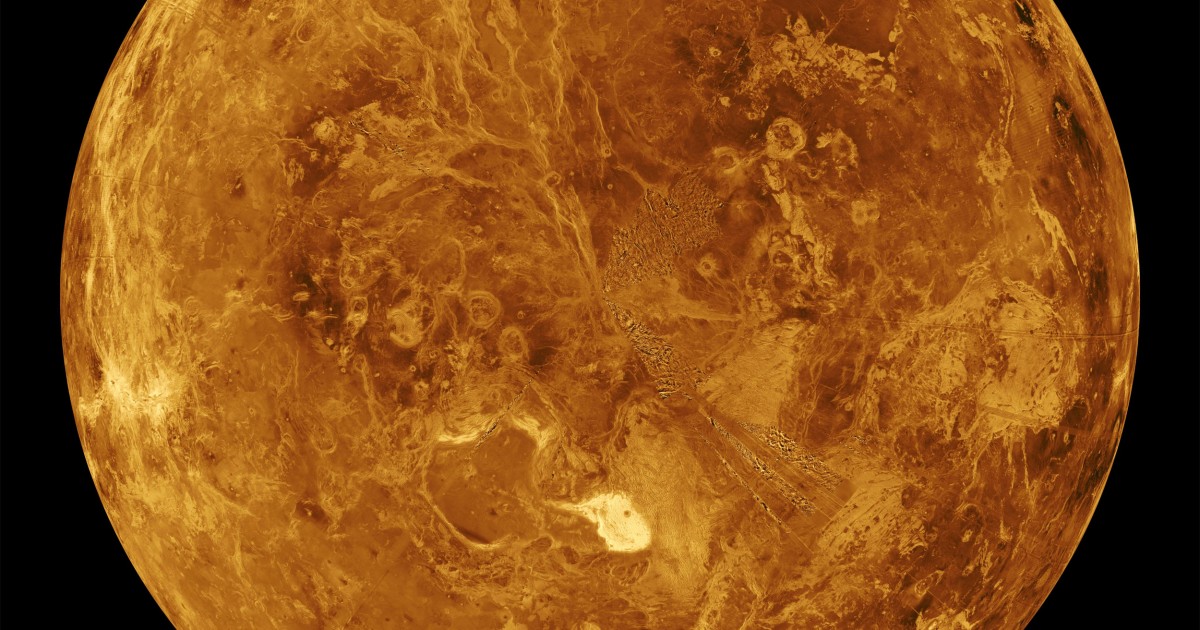
The widespread detection of phosphine gas on Venus – a possible “biosignature” that suggests the hellish planet could have living microbes in its clouds – was likely caused by an entirely different gas that is not a clear sign of life, according to new research.
Studies by a team of US scientists suggest that the radio telescope observations believed to reveal phosphine on Venus were instead caused by sulfur dioxide, which gives signals that, under certain conditions, could be confused with phosphine.
The latest research published in January also suggests the radio signals came from far above the Venus clouds, where phosphine would be quickly destroyed by other chemicals – further reinforcing the idea that they were caused by sulfur dioxide.
“Our new research makes detection of phosphine a lot less likely,” said Victoria Meadows, an astrobiologist and professor of astronomy at the University of Washington in Seattle who helped lead the studies. “We can easily explain the observations using sulfur dioxide … and it doesn’t require any unknown chemistry.”
Sulfur dioxide is a relatively common gas on Venus, believed to be caused by the chemistry of the thick, non-breathable atmosphere and possibly volcanoes. It is also found in the Earth’s atmosphere, where it mainly comes from volcanoes and from burning fossil fuels.
Phosphine gas, on the other hand, is created on Earth by some microorganisms as they digest organic matter, and so it is considered a possible “biosignature” – meaning that its detection in the atmospheres of distant planets could be a sign of elemental life.
The British-led team of scientists that first reported the possible detection of phosphine on Venus said it knew of no chemical process that could produce it – leading to the suggestion that it could come from microbes found in the clouds float from the planet miles above the super-hot surface. .
After the scientists reconsidered their initial findings with recalibrated data from the ALMA telescope in Chile’s Atacama Desert, they said they still believed they had detected phosphine on Venus, but much less. They now hope to provide a detailed response to the new research within weeks.
Ignas Snellen, professor of observational astrophysics at Leiden University in the Netherlands who was not involved in the latest studies, said it now seemed unlikely that there was phosphine on Venus.
The recalibrated data from the ALMA telescopes showed no evidence of phosphine, and previous detections by the James Clerk Maxwell radio telescope in Hawaii could now be explained as sulfur dioxide, he said.
“I think the story of phosphine and possibly life on Venus ends here,” he said.